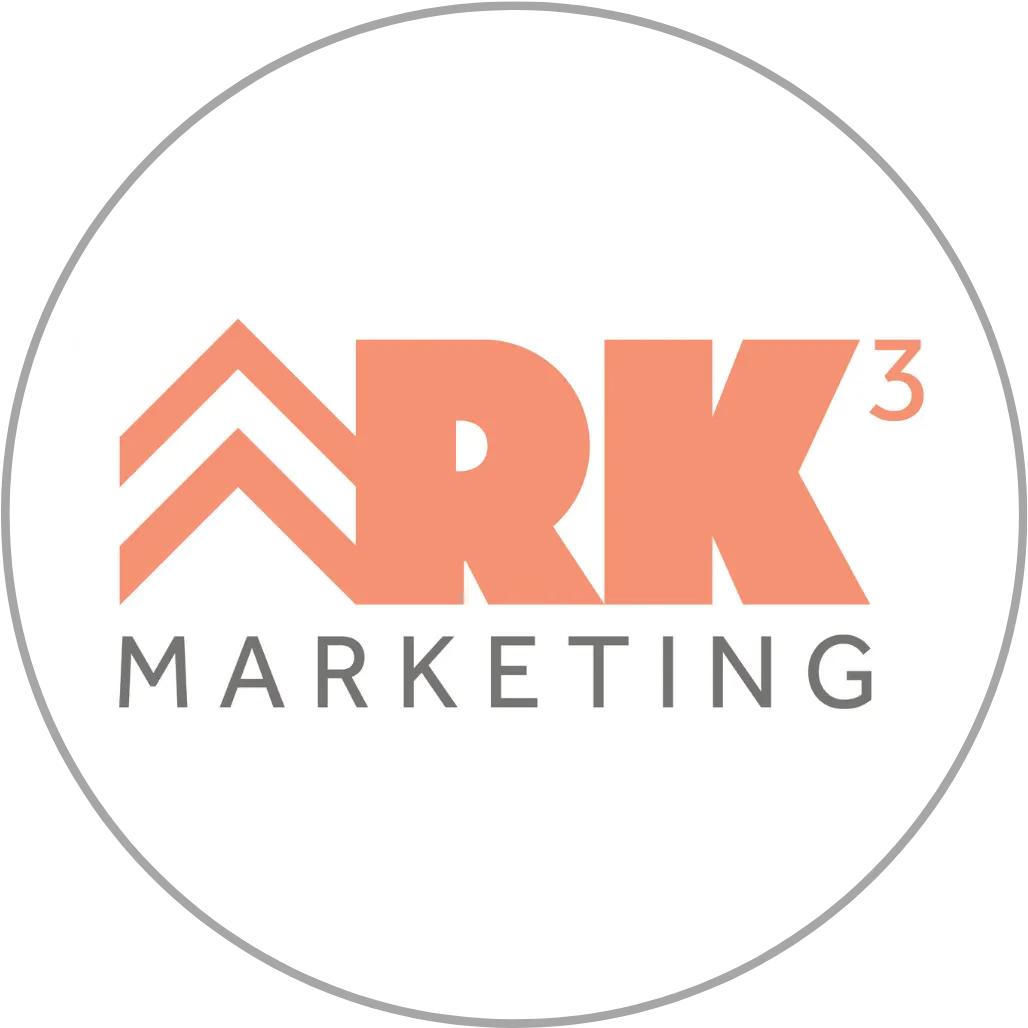

This website uses cookies to improve website functionality, analyze website usage, and assist in our marketing efforts. By continuing to use this site, you agree to our cookie policy.
ARK3 Marketing Blog
Get more in depth content about popular marketing topics and DIY step-by-step guides.

The Ultimate Guides for Your Brand!
Creating the basic guides for your business’s brand is essential for maintaining a consistent and coherent brand identity across all communication channels. Consistency with trusted information, including quality products and services, can lead to strong brand recognition, customer loyalty, and business growth.
Develop a strong brand by using these key steps to shape your four branding guides: brand identity guide, branding style guide, branding language guide, and branding content guide.

Step 1 – Define Your Brand Identity
Developing a brand identity is a strategic process that involves defining and shaping the way a business wants to be perceived by its target audience. This process also helps shape the business’s mission, values, identifies its target audience, and pinpoints its unique selling propositions, all of which lead to establishing strong brand recognition and customer loyalty over time.
1. Understand Your Business:
a. Mission and Values: Begin by clearly defining your business's mission and values. What is your purpose, and what principles do you stand for? Your brand identity should align with these core aspects.
2. Know Your Target Audience:
a. Audience Analysis: Research and understand your target audience. Who are they? What are their needs, preferences, and pain points? Your brand identity should resonate with your audience.
3. Analyze Your Competitors:
a. Competitive Analysis: Study your competitors and their brand identities. Identify gaps and opportunities for differentiation in the market.
4. Define Your Unique Selling Proposition:
a. Differentiation: Determine what makes your business unique and why customers should choose you over competitors. This will be a fundamental element of your brand identity.
5. Create a Brand Strategy:
a. Brand Positioning: Decide where your brand will sit in the market. Are you a luxury brand, an affordable option, or something else? This guides your branding choices.
b. Brand Personality: Define the personality traits and characteristics that your brand will embody. Is it friendly, professional, innovative, or adventurous?
c. Brand Promise: Craft a clear and compelling brand promise that communicates what customers can expect from your products or services.
6. Develop Visual Brand Elements:
(More specifics are listed under “Step 2 – Create a Branding Style Guide”)
a. Logo Design: Create a distinctive and memorable logo that represents your brand's essence. Ensure it’s versatile for different applications. It is helpful to have a horizontal and vertical version.
b. Color Palette: Choose a color scheme that reflects your brand's personality and resonates with your target audience.
c. Typography: Select fonts that align with your brand's voice and image.
d. Imagery and Design Elements: Determine the types of imagery and design elements that will be consistently used in your branding materials.
e. Create a Brand Guide: a comprehensive document that outlines the proper use of all brand elements, from logo size and placement to color codes (see step 2).
7. Craft Brand Messaging:
(More specifics are listed under “Step 3 – Develop a Branding Language Guide”)
a. Tagline and Slogan: Develop a catchy and concise tagline or slogan that encapsulates your brand's essence.
b. Brand Voice: Define your brand's tone and style of communication. Is it formal, informal, humorous, or professional?
c. Key Messages: Create key messages that convey your brand's values, benefits, and unique selling proposition.
8. Design Brand Collateral:
a. Business Cards, Letterheads, and Stationery: Ensure consistency in design across all printed materials.
b. Website and Digital Presence: Create a user-friendly, visually appealing, and mobile-responsive website that reflects your brand identity.
c. Social Media Profiles: Customize social media profiles with brand colors, logos, and messaging.
9. Test and Refine:
a. Feedback and Testing: Solicit feedback from employees, customers, and stakeholders. Test your branding materials to ensure they resonate with your target audience.
10. Launch and Communicate:
a. Brand Launch: Officially introduce your new brand identity to the world through various marketing channels.
b. Consistent Messaging: Ensure all your communications consistently reflect your brand identity.
11. Monitor and Adapt:
a. Brand Tracking: Continuously monitor how your brand is perceived by your audience. Adapt and refine your branding strategy as needed to stay relevant and competitive.
Developing a brand identity is an ongoing process that requires careful planning, consistency, and a commitment to aligning your brand with your business's core values and goals. It's an investment that can help establish strong brand recognition and customer loyalty over time.

Step 2 – Create a Branding Style Guide
The Branding Style Guide focuses on the visual aspects of your brand, ensuring consistency in design and aesthetics. It also outlines the proper use of all brand elements, from logo size and placement to color.
1. Logo Usage:
a. Specify the correct usage of your logo, including size, placement, and clear space requirements.
i. Horizontal vs vertical options, the logo by itself, as well as showing versions with the tagline included.
ii. Consider a version that is suitable for a social media profile image as well. While some social platforms use a square profile image, others use a circle.
b. Provide versions of the logo for different backgrounds (e.g., light and dark).
2. Color Palette:
a. Define your brand's primary and secondary color palette with HEX, RGB, and CMYK codes.
i. Be mindful of color usage. If you anticipate doing a lot of printing or embroidery work, more colors lead to higher costs.
ii. Color psychology is also important to take into consideration. Colors can evoke various feelings and emotions.
b. Show how colors should be used in various contexts (web, print, etc.).
3. Typography:
a. Choose fonts for headings, subheadings, and body text.
i. A serif font is typically more traditional.
ii. A sans-serif font is generally more modern.
iii. Handwritten fonts can be more whimsical and should be used sparingly.
iv. Decorative fonts can be fun and unique but should also be used sparingly.
b. Specify font sizes and styles for different purposes (e.g., web, print, presentations).
i. It is useful to choose fonts that are generically compatible with websites because not everyone uses the same type of web browser (Google Chrome, Safari, Firefox, Explorer, etc.). While a developer can upload a custom font to your website, it is not always guaranteed it will display properly.
ii. As for presentations, it is also useful to pick a generic font like “Arial” that is compatible with Mac and PC computers. While installing custom fonts is relatively easy, this will allow you to share a presentation with ease and prevent unexpected layout changes.
4. Imagery:
a. Provide guidelines for selecting and using images, illustrations, or icons that align with your brand's visual identity.
b. Define photography style, filters, and image treatments.
5. Design Elements:
a. Outline any unique design elements, such as patterns, textures, or graphics, that are part of your brand.

Step 3 – Develop a Branding Language Guide
The Branding Language Guide focuses on the tone, voice, and messaging of your brand.
1. Audience Persona: Describe your target audience personas, including their needs, pain points, and communication preferences.
a. Explain how your messaging should resonate with these personas.
2. Brand Voice: Define your brand's voice (e.g., formal, casual, playful) and its key characteristics.
a. Provide examples of how this voice translates into different types of content.
3. Content Tone: Specify the tone to be used in different communication contexts (e.g., website, social media, customer support).
4. Vocabulary: Consider descriptive words and phrases appropriate and not appropriate for your brand.
a. For example, how should your business refer to a customer? Are they a visitor, tourist, traveler, client, shopper, patron, etc.?
b. Are there circumstances where you might refer to a customer in a different manner?
5. Messaging: Create a list of key brand messages and taglines.
a. Include guidelines for crafting compelling and consistent brand narratives.

Step 4 – Construct a Branding Content Guide
The Branding Content Guide focuses on specific content creation and distribution guidelines.
1. Content Channels: List the channels where your content is released (e.g., blog posts, videos, social media updates, emails, press releases, etc.).
a. Describe the purpose and best practices for each.
2. Content Type: Identify the main types of content categories your brand should be relaying.
3. Content Calendar: Create a content calendar that outlines when and where different types of content should be published.
a. Include key events, holidays, and milestones.
4. SEO and Keywords: Explain your approach to search engine optimization (SEO) and keyword usage in content.
a. Provide a list of relevant keywords and phrases that are important for your business to rank for.
5. Social Media Guidelines: Define how your brand should behave on social media platforms.
a. Include guidelines for posting frequency, content sharing, and engagement.
b. Create a list of hashtags (#) and tags (@) you anticipate your brand to use on a regular basis.
c. Identifying important website links for sharing purposes can also be useful.
6. Review Guidelines: Establish how often your brand should respond to reviews and provide examples of appropriate responses for each type of review rating (one star up to a five-star rating).
a. Be clear on the protocol for ratings ranking one to three stars.
7. Editing and Proofreading: Establish a process for editing and proofreading content to maintain quality and consistency.
Step 5 – Review and Update
Periodically review and update these guides to ensure they remain relevant and aligned with your evolving brand identity and market trends.
Step 6 – Awareness and Training
Creating and maintaining these guides will help build and preserve a strong and cohesive brand identity across all touchpoints within the customer journey, including fostering trust and recognition. To ensure consistency, it’s important to train and share the brand guidelines with your team members, content creators, and even external partners.
This website uses cookies to improve website functionality, analyze website usage, and assist in our marketing efforts. By continuing to use this site, you agree to our cookie policy.

Hello!
ARK3 Marketing
812.945.0577
101 Plaza East Blvd
Suite 317
Evansville, IN 47715

Like us. Follow Us. Love Us.
©2024 • ARK3 Marketing • All Rights Reserved
This site is not a part of the Facebook™ website or Facebook™ Inc.
Additionally, this site is not endorsed by Facebook™ in any way. Facebook™ is a trademark of Facebook™, Inc.

812.945.0577
101 PLAZA EAST BLVD
SUITE 317
EVANSVILLE, IN 47715
Like us. Follow us. Love us.
©2024 • ARK3 Marketing • All Rights Reserved
This site is not a part of the Facebook™ website or Facebook™ Inc. Additionally, this site is NOT endorsed by Facebook™ in any way. Facebook™ is a trademark of Facebook™, Inc.
Let's Talk
We'd love the opportunity to get to know you and learn more about your business.

317.525.7815
101 PLAZA EAST BLVD
SUITE 317
EVANSVILLE, IN 47715
WORK SAMPLES
CONTACT
PRIVACY STATEMENT
TERMS OF USE
Like us. Follow us. Love us.
©2023 • ARK3 Marketing • All Rights Reserved

